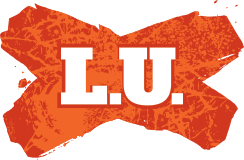OVP
Coach
- Messages
- 11,632
How about we all make this thread great ... about our past Rugby League players ...
They dont have to be great players, just say why you admire them, for whatever reason. Thats a great story in itself.
This is the player i would like for more people to know about.
This is word for word from Wikipedia ....
So who do you admire ? Rugby League has probably had the toughest people in history playing our sport. AFL can only claim the best kickers ... pfffttt... wtf is that sh*t ?
So please tell us about someone else, YOU want us all to know about. After all we are legitimately 100 (or 101) years old this year
They dont have to be great players, just say why you admire them, for whatever reason. Thats a great story in itself.
This is the player i would like for more people to know about.
This is word for word from Wikipedia ....
Raymond Ernest Stehr (24 January 1913 – 2 June 1983) was an Australian rugby league footballer.
Stehr was born in the country New South Wales town of Warialda in 1913. As an eight year-old child, Stehr was diagnosed an incurable cripple after developing blood clots at the base of his spine. He was unable to walk for two years and spent twelve months strapped to a stretcher, completely immobilised with his back encased in a plaster cast. His family moved to Sydney in search of some kind of miracle cure and, following a visit to a Chinese herbalist, the clots began to disappear. Nevertheless, Stehr was told not to contemplate playing contact sport. Stehr defied medical opinion, becoming one of the toughest front rowers rugby league has ever seen.[citation needed]
First recruited as a schoolboy from Randwick Boys High School by the Eastern Suburbs club in 1928, Stehr made his first-grade debut the following season aged just 16 years and 85 days - the youngest ever first-grade rugby league player. He made his first appearance for NSW in 1932 and the following year he was selected to go away with the 1933-34 Kangaroo's. On tour he played in 26 matches, including two Tests.
On his return Stehr joined the Mudgee club in rural NSW as a captain-coach and also captained Country in their annual clash against a Sydney representative side. Midway through the 1934 season he rejoined Easts who were defeated by Western Suburbs in the premiership decider that year. Over the next three seasons, Stehr was a member of the Eastern Suburbs side that lost just one match, winning premierships in each of those years - 1935, 1936 and 1937.
Stehr played in test series against New Zealand and England. In the series against England he set another record when he was sent off in two of the three matches. The uncompramising, no nonsense front rower was then selected for his second Kangaroo tour in 1937-38. WWII brought an end to his test career but in 1940 Stehr was captain of the Easts side that captured it’s 8th premiership. Stehr spent the next few years serving in the military but on his return in 1945 lead Eastern Suburbs to further premiership glory.
Stationed in Darwin during the war, Stehr was named captain of a North Australian representative side in a match against Central Australia
Even after his retirement in 1946, he wasn't far from the game. He was coach at Manly in 1947-48 and Easts’ in 1949; a sports journalist – Stehr wrote a column, for many years, in a Sydney newspaper and worked in television media. He was also club president at Easts. Stehr was named in Eastern Suburbs greatest ever team - an honoury team.
Stehr played in 184 matches for Eastern Suburbs, for many years the most, he represented Australia in 11 tests and played more than 20 matches for his state - New South Wales. During his career, the uncompromising front row forward even had a short stint as a professional Boxer.
Stehr died on the 2 June, 1983 aged 70… his famous sign off in the media was – 'East’s To Win!'.
So who do you admire ? Rugby League has probably had the toughest people in history playing our sport. AFL can only claim the best kickers ... pfffttt... wtf is that sh*t ?
So please tell us about someone else, YOU want us all to know about. After all we are legitimately 100 (or 101) years old this year



